Microsoft should follow this recipe for 'Surface Phone' success
Microsoft is working on … something, that much we know. And if it is a "Surface Phone," how will Redmond get it into people's pockets?
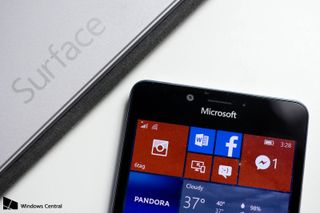
Microsoft has spent the last two years alienating its phone fan base and developer community on mobile, leaving a tiny handful of third-party hardware OEMs to keep Windows 10 Mobile on life support, while popular services like Flipboard and Spotify abandon the platform. Anyone following Microsoft's moves in this space would be forgiven for assuming the company had zero aspirations of getting back into the phone game.

But, still, there are genuine reasons to believe Microsoft wants to stay in the game, and that the company is just pouring its energy into something truly different.
In this article, we assume the Surface Phone is a real thing that will be released. Join us for a healthy dose of speculation as to how Microsoft could leverage the bits and pieces of Windows 10 to create something that finds its way into people's pockets despite the adversity of the task ahead.
True productivity on mobile
With the Surface Laptop, Studio, Pro, and Book, you could argue that Redmond was playing on its home turf, PCs, while leveraging its knowledge and consumer confidence in the business, education, and prosumer markets. When it comes to phones and mobile devices, confidence in Microsoft couldn't possibly be lower.
That's why the Surface Phone has to aggressively not be a "phone," but something different, maybe even something that you'll want to carry around alongside an iPhone or Android device. To that end, the Surface Phone has to settle niche use cases that iPhone and Android devices don't achieve very well.
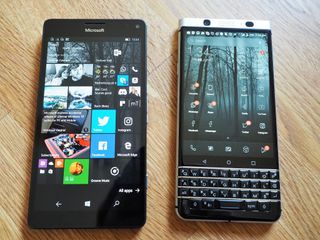
Using a BlackBerry KEYone phone with a full QWERTY keyboard, I have found myself doing something I'd never attempt on touch-screen keyboards on Windows 10 Mobile, Android, or iOS: word processing full articles.
The Surface Phone can afford to provide for a wide variety of prosumer niche use cases without gunning for the Snapchat crowd.
Word for phones is great on all platforms, but software keyboards just suck for anything long form, especially when you're a touch typist. I'm not suggesting Microsoft should make a BlackBerry phone, but full keyboards could be a way of promoting the Surface "Phone" as something more akin to a laptop or 2-in-1, for people who want to get work done on the go.
Get the Windows Central Newsletter
All the latest news, reviews, and guides for Windows and Xbox diehards.
Microsoft has piles of patents that could lead to this sort of device. Multi-screen configurations, kickstands, the Surface Connector, and type covers could help the Surface Phone take on a 2-in-1 form factor.
Our Senior Editor Zac Bowden has shown how CShell versions of Windows 10 can [conform to different screen sizes and different orientations. Windows 10 Mobile has very poor landscape support, which would be required for this sort of play; with CShell it would "just work."
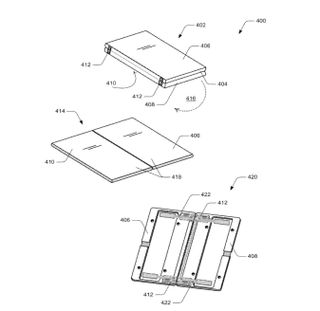
Any sort of Surface Phone would probably be on the larger side of things, aimed at the same consumers the Samsung Galaxy Note targets.
Windows 10 on ARM chipsets opens up a lot of possibility for mobile productivity.
It could be that the Surface Phone pushes the boundaries of what "phablet" truly means, as it attempts to shrug off accusations of being a "phone." Bigger devices mean more I/O ports, more screen real estate for multiple windows (something else CShell will help support), and inking while retaining legacy phone features such as cellular and calls (likely via a bundled hands-free headset, like the HP Elite x3).
Windows 10 on ARM chipsets opens up a lot of possibility for mobile productivity. Microsoft has already demonstrated Photoshop and full Office running on ARM, and if you're throwing in inking, a Surface Phone could be the pocket sketchpad of an artist's dreams.
That's the thing about the Surface Phone and Windows 10 for ARM or Shell, it can afford to provide for a wide variety of prosumer niche use cases without gunning for the "hip and cool" Snapchat crowd, which is where Lumia utterly failed.
Surface Phone as an Xbox handheld?
If my recent travel to IFA 2017 is any indication, gaming has become increasingly critical to Microsoft's growth aspirations. In every single keynote I went to, a significant portion, if not half or more, revolved around gaming PCs and peripherals. Windows Mixed Reality head mounted displays (HMDs) are designed for gaming, and Microsoft was by no means shy to flaunt its partnership with Steam – PC's biggest gaming distribution platform – for Windows Mixed Reality headsets.

It's the Steam partnership that is particularly interesting to me, given the icy comments from Steam maker Valve's CEO, Gabe Newell, about the very notion of Microsoft running its own app stores on Windows.
Valve and Microsoft are working together, and it seems to be out of pure necessity to help Windows grow.
Perhaps Valve realized that the growth of Windows is also the growth of Valve and that the future of core gaming itself might rest in the cooperation of these two companies. Neither has a foothold in mobile.
It cannot be a coincidence that Steam is not only working with Microsoft on VR but also to bring cross-network capabilities to Steam and the Universal Windows Platform (UWP) on the Windows 10 Store. Valve and Microsoft are working together, and it seems to be out of pure necessity to help Windows grow. I wouldn't be surprised if we see Steam itself become installable from the Windows 10 Store in the near future, and that would certainly be ideal for a family of devices running Windows 10 on ARM.
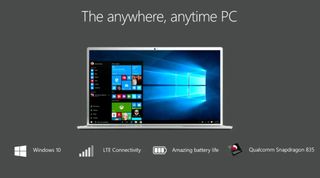
As Microsoft barrels ahead with the 4K, six-teraflops (TF) Xbox One X, Nintendo launched a tablet of all things, powered by previous-gen graphics and relatively weak hardware. It sold 1.5 million units in just a few months.
Envision a Surface Phone on the train, folded in tent mode, an Xbox controller connected, running full Steam.
Part of that is the quality of its library, catering to a fanbase it has nurtured for decades, but also because Nintendo went for something different, designed to be a companion to the Xbox One and PlayStation 4, rather than attack them.
Microsoft's re-emergence in mobile must follow a similar path. Perhaps a powerful tablet phone 2-in-1 that has the ability to run real games, not Candy Crush, could give the Surface Phone and similar OEM partner devices another feather in their caps of varied niche use cases.
Envision a Surface Phone on the train, folded in tent mode, an Xbox controller connected, running full Steam, capable of playing classic or even well-optimized current-gen games. Perhaps even some sort of Xbox controller attachment could replace a second screen, if the Surface Phone followed some of the "Microsoft Courier"-like patents we've seen.
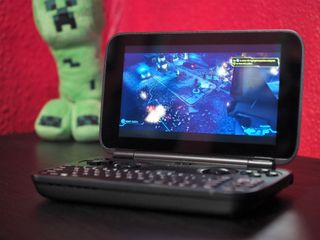
I was able to run Overwatch on the GPD Win six-inch gaming clamshell with Intel integrated graphics and enjoy games that were extremely popular in the Xbox 360 era. As Snapdragon chipsets get even more powerful and cooling technology gets further miniaturized, it stands to reason that more and more Steam games could become compatible with devices that use Windows 10 on ARM.
The fact that Microsoft demonstrated World of Tanks Blitz running on Windows 10 on ARM when it debuted the OS should not be seen as a coincidence. I'm not suggesting running Steam on a phone is going to be a use case every PC and Xbox gamer rushes towards, but it would be another niche the Surface Phone or similar OEM devices could fill. Microsoft knows gaming is one of the only ways Windows still appeals to a wide consumer audience, and as we've already seen with Mixed Reality, leveraging that is a no-brainer for any new device category.
The Mixed Reality angle
If we're assuming the Surface Phone is a larger phone or tablet device with higher-end hardware, it could end up being powerful enough for more advanced Mixed Reality features, providing the missing link in Microsoft's wider MR play.
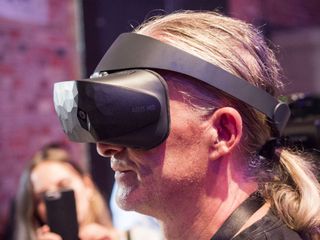
While Microsoft flirts with HMDs and bides its time with a consumer version of HoloLens, Apple and Google both plow ahead with their own brands of augmented reality (AR), ARKit and ARCore. People have their cell phones with them all day, every day, which will lead to wider adoption of iOS and Android AR solutions versus Microsoft's menagerie of headsets.
Even if the Kinect-spawned Windows Mixed Reality spatial awareness cameras are far more powerful than AR powered by a smartphone, the biggest AR apps today are on mobile, including Pokémon Go and Snapchat's lame face filters.

Perhaps the Surface Phone could have more powerful spatial awareness, complete with a separate AI coprocessor, as teased for the next version of HoloLens. This would give it a clear advantage over iPhone and Android solutions.
Putting a window to Mixed Reality in your pocket is far easier than carrying around an HMD.
One user could be wearing a HoloLens, while another could use a Windows Mixed Reality phone as a literal window into the virtual world, collaborating on a project, sending new holograms into the Mixed Reality world or tweaking existing ones.
HoloLens has seen the most growth in businesses thus far, where different companies use 3D models to replace physical ones, training staff on how to repair complex and expensive machines without having to actually provide physical samples. Adding tablets into the mix with similar features will open up wider opportunities for on-the-go collaborative Mixed Reality experiences.
Putting a window to Mixed Reality in your pocket is far easier than carrying around an HMD in scenarios where it might be inappropriate.
Microsoft must be in mobile
Microsoft's retrenchment in mobile has been a legendary sore point for the company.
The burning of Microsoft's bridges with developers, the negative PR as large entities pull out of huge phone contracts, and the near-memetic status of "Windows Phones" that has become synonymous with utter failure will not make any Surface Phone push an easy one.

Microsoft has to be in mobile. It is the focal point of all consumer IoT devices, where Microsoft has failed. It is the focal point of connected A.I. assistants like Cortana, where Microsoft also failed. And it's the center of AR, where Microsoft could also fail.
Not being in mobile will cost Microsoft and its OEM hardware partners the future of computing.
Microsoft places the Azure cloud platform at the center of its "Intelligent Edge" diagram, revealing how inwardly the company thinks. For every Microsoft customers, a mobile phone is a central aspect, connecting them to their hobbies, work agendas, social lives, and beyond. This isn't going to change for a long time.
Not being in mobile, even in a small way, will cost Microsoft and its OEM partners the future of computing, and I'd hate to think Redmond is arrogant and ignorant enough to think that it can be a platform holder in this space without having a device you carry around with you everywhere. That's not a laptop and it's not a headset. Having those features native to the OS is always going to be more powerful than putting them on the iOS and Android app stores.
Nobody outside Microsoft knows whether its folding-phone patent will ever turn into a product, or whether we'll ever see "Surface" as a brand attached to a pocket PC. But if so, it could be a truly pivotal device, spawning a new category of OEM PCs — and a world of new opportunities.

Jez Corden is a Managing Editor at Windows Central, focusing primarily on all things Xbox and gaming. Jez is known for breaking exclusive news and analysis as relates to the Microsoft ecosystem while being powered by tea. Follow on Twitter @JezCorden and listen to his XB2 Podcast, all about, you guessed it, Xbox!
